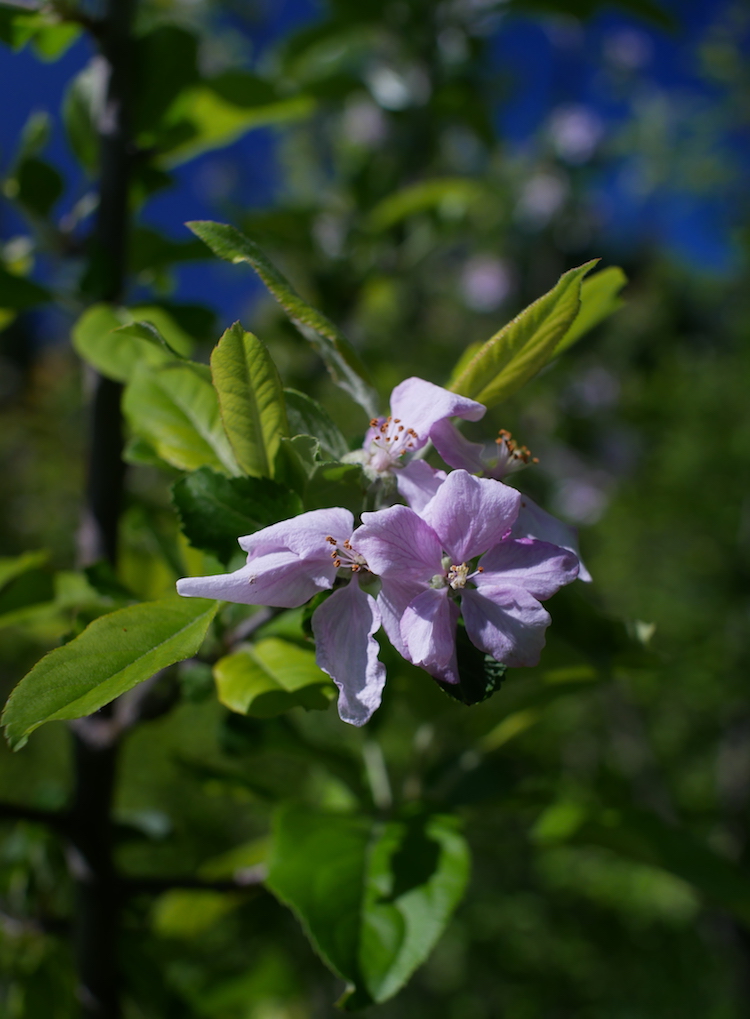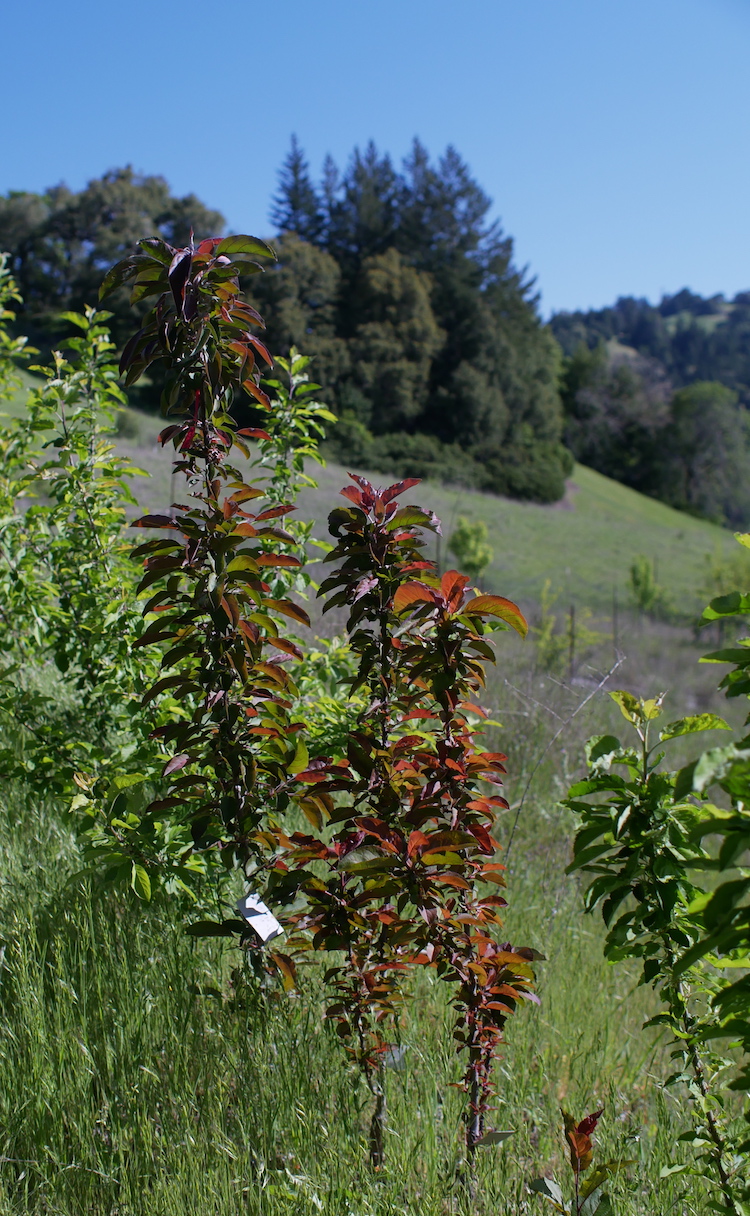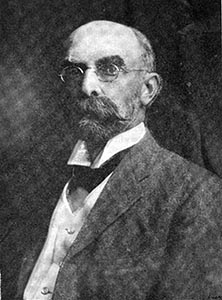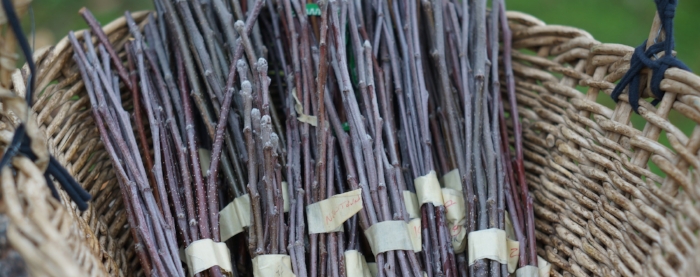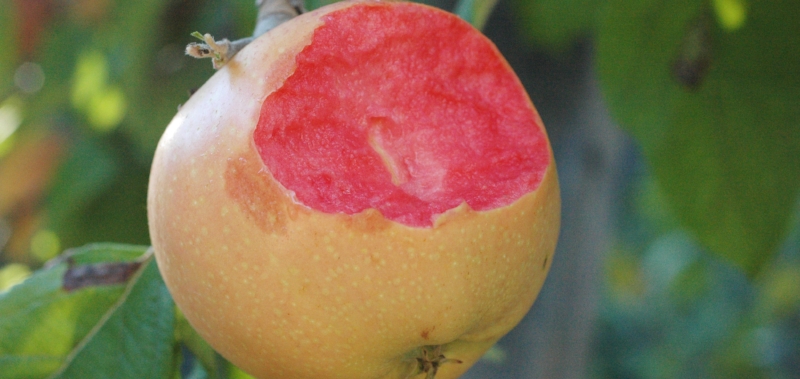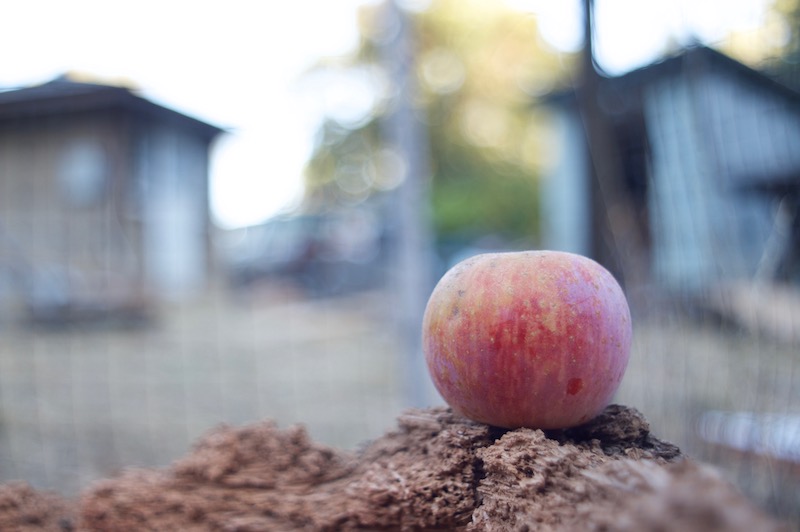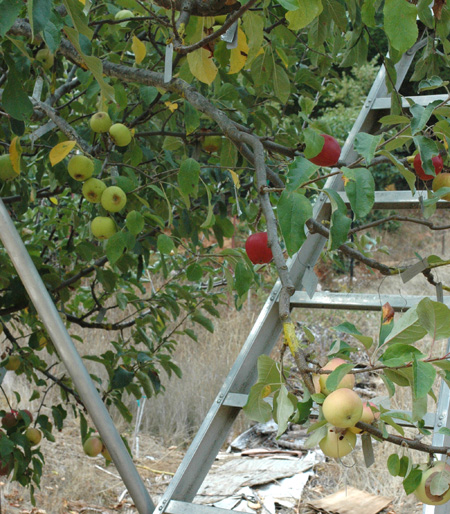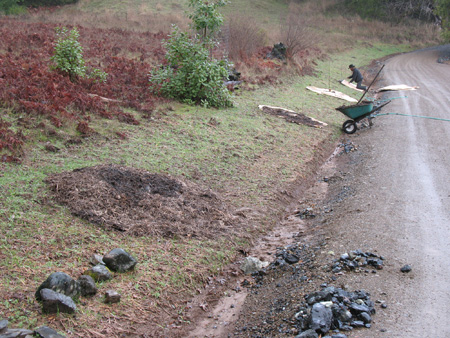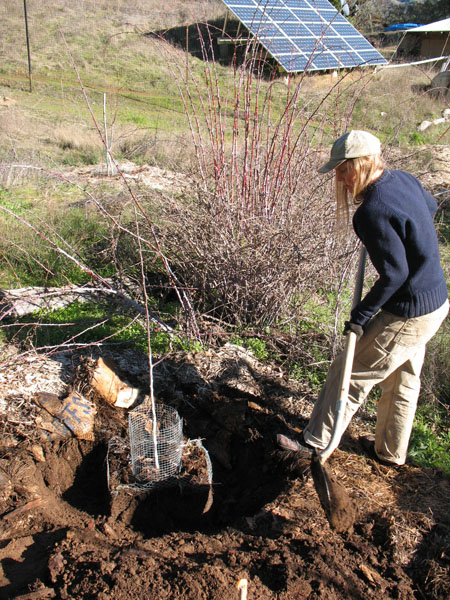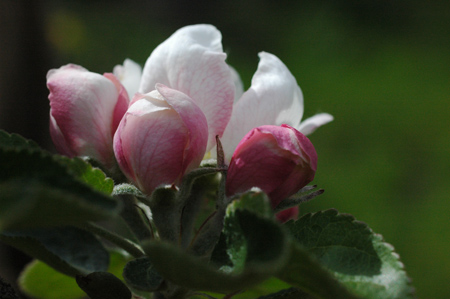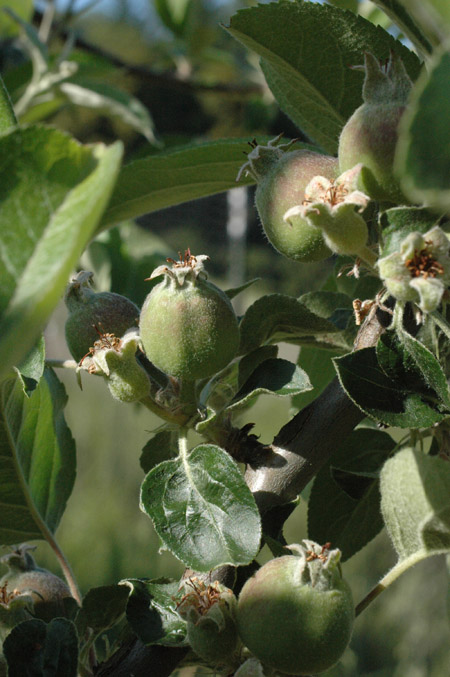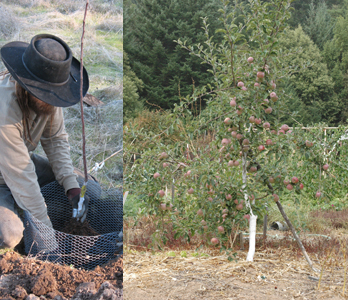I grafted and planted this pear tree over 10 years ago that never would grow. but it also didn’t die. One year the top died and the rootstock was growing back with some signs of enthusiasm. I pruned it back to one shoot, watered, fertilized and mulched it, and it grew like mad. It ended up growing into a tall whip, which is s single shoot with buds and no branches. I determined to make an example of it regarding how to train a whip into a tree of a desired form. I made a video, and then a follow up video, of training that tree last year, which are linked in a playlist at the end of this post.
This spring, it was time to revisit this tree, see how my interventions worked and set it up for the next stage of growth. It’s a quick recap of the process so far, a look at the results, some snipping and then showing what I would do with it next year. Instead of repeating that information here, I’ll make this post complimentary by discussing some important principals in tree training.
Some Important Principals in Training Fruit Trees
If fewer growing points are left on a tree, those remaining will tend to grow more. This is how coppicing (cutting completely down to stimulate regrowth) and natural regrowth after floods and fires all work. A coppiced tree will have X number of growing points, far fewer than a mature tree. Therefore those few growing points grow faster. As the tree grows, those tall new shoots branch and suddenly there are more than double the amount of shoots, so the tree cannot grow them all like it did the initial regrowth. And the process will continue until the tree is clogged with small growth that extends very little each season. Small less vigorous growth now serves the wood that supports it further down the branches and trunk. This process is not predictable in a linear way however. In actual practice, this tendency can be taken advantage of by removing whole shoots, pinching off unwanted growth, or just removing buds before the tree even has a chance to grow them as I did with this tree. the 12 buds I left on the trunk all grew, so this year I took off all I didn’t want, leaving 4, which will not grow longer and thicker in light of that reduced competition.
Resources coming up the trunk from the roots can be diverted into branches, resulting in fewer resources reaching parts of the tree further up: This is not as simple as there being a large branch and therefore that branch will siphon off X amount of resources, but it is true nonetheless. Other factors would be the amount of leaf area that part of the tree has to drive it’s own growth and “draw” in resources from the trunk flow, how much sun it gets, and it’s hormone situation. By creating it’s own self feeding ability to grow, or not, a branch may limit or increase it’s own use of and access to those resources coming up the trunk. There seems to be both a global tree-wide system of growth drive and allocation of resources, and a phenomenon that presents like the tree is competing with itself.
Leaf area is required to grow trees: Trees need leaves in order to do things like extend shoots, grow thick & robust trunks and branches, stock carbohydrates for growth and storage, and to grow more shoots and leaves to gather yet more food. Principal one, (fewer shoots means more growth into those shoots), may translate into less energy gathered, stored and used by the tree because it can reduce leaf area by reducing the number of shoots allowed to grow. If carried to an extreme, the trunk and branches may end up too spindly and weak. That does not however necessarily mean that we have to leave as much growth as the tree wants to grow. We can find a balance where we utilize the above principals to drive growth where we want it and into fewer points, while still leaving some extra growth to collect food. I don’t think there is a complete functional alternative to removal of some growing points to drive growth into others in order to establish large, dominant scaffold branches. Not to say that there are no other tools for prioritizing growth potential of certain growing points, but that reduction of growing points is an essential tool to that end. Just keep in mind that leaf area is required and note both how leaving extra growth may feed the tree with it’s leaf area, and also how it may hold back growth of the wood that you want to grow the most.
Hormones have a major role in controlling tree growth. This is why notching above buds will drive their growth. In the future, as I have more trees to experiment on and sketch out what I think are the most telling, achievable experiments, I’ll be experimenting more with notching both above and below buds and branches as well as ringing trees completely at times to observe how those practices might be turned to practical effect in various situations.
Training Trees and Pruning Are More Art than Science: If you want consistent results, get a different hobby lol. While there is a lot of predictability, challenges will present themselves and plants will assert their priorities or tendencies over yours at times. These situations require adaptation by the artist. Think in terms of principals and actual goals. The. goal is not narrowly to grow branch x exactly at this point, but to fill a vertical and horizontal space in a certain way to grow fruit on. That may involve, bending or guidance pruning to get the branch to fill in that area. But as long as it fills it in and does the job, that’s the real goal. I’m trying to collect, innovate and test tools we can use to meet the challenges that sometimes present themselves.
I had planned to plant some test trees this year and bought a bunch of rootstocks, but it’s looking like that won’t happen this year. I’m trying to decide today whether to ditch that project completely, or try to find a spot to grow them out into whips this year. But it’s just as likely that if I bother to do that, I may not want to put them in next year either. My position on the homestead is uncertain right now, and I’m hesitant to put in anything long term until that is more clear, which probably won’t happen soon. I’m also putting in as much food as possible this year, and that is a competing priority for dirt, water and attention.
Whatever the future holds, I know I’m not going to get a fraction of what I want to do done if I don’t come up with a crap ton of money and pretty fast. Whether it’s to better secure or negotiate my place here or move somewhere else, a lot of money will be involved. Nothing is cheap here in the land of snooty wineries and black market cannabis culture. I’ll be switching my priorities to revolve around income for a while to see if I can make something work, which would essentially involve doing a bunch of stuff I want to do anyway, just in a very strategic way. My bare minimum goal is to be making 100% of the land and tax payments here by the end of a year from now and hopefully by then, or soon after, a lot more than that.
While the direct action part of tree training research has become a luxury that I probably can’t afford to engage in on any scale right now. It does remain a strong long term priority, because I think it has the potential to broadly update home fruit tree training to version 2.0 That solution probably won’t involve techniques and ideas that don’t already exist (nothing new under the sun eh?) but rather collecting those tools, vetting them for practical application, encouraging citizen testing and then packaging that effectively into a system or approach, that is both simple and effective for people that are not level 10 fruit nerds like me. I’m still super stoked about this project and have gotten a lot of positive feedback from people that are trying this type of approach. It’s just going to have to be put on the back burner to simmer for now.
In the meantime, I love hearing back from people how this approach works for them, good or bad.

